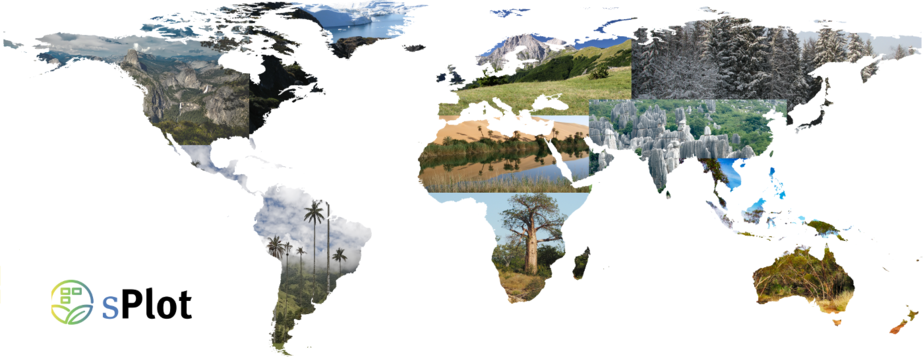This is a task of the Martin-Luther-Universität Halle-Wittenberg, MLU.
WP5 links the climatically relevant vegetation classes from WP4 to important biodiversity metrics relating to functional trait composition and biodiversity. Although we know that many traits such as wood density, leaf chemistry, or leaf nutrient contents are linked to climate-relevant ecosystem functions such as carbon sequestration and evapotranspiration, and are themselves correlated with temperature and precipitation30, we still lack many details on how traits actually provide feedbacks to climate. WP5 will quantify the relationships between climate, ecosystem functional composition and diversity, focusing in particular on traits related to climatically relevant parameters such as albedo and evapotranspiration. Thus, we go beyond the coarse representation of vegetation by few PFTs to predict climate-related processes, and focus on those PFTs that reflect transpiration, growth and successional status of vegetation. e.g. identified that litter (the organic material on the forest floor) such as leaves and woody debris is the most relevant predictor for albedo, while the amount of understory vegetation was most important for predicting evapotranspiration. In contrast, the traits of the classical leaf economics spectrum had only a minor impact on model results. We thus plan to include further traits relevant for litter decomposition such as leaf toughness and phenolics content and for transpiration control, such as stomata density. We will use a Bayesian hierarchical modelling approach and first investigate how ecosystem trait composition varies with respect to climatic variables produced in WP1 and the vegetation classes from WP5. We model the joint distribution of the values of the different traits at the plot-level and then aggregate these distributions by the vegetation classes of WP4, also providing estimates for community-weighted trait mean values (CWM) and trait variances (CWV). We then quantify the predicted shift in trait value distribution on those ecosystem functions that affect climate- relevant processes. The inclusion of plant traits will provide a deeper understanding of the effect of specific plant trait compositions on the biodiversity – climate feedback.

Tasks
- Linking traits to species databases and vegetation plots: Compile the relevant traits from the TRY database and other available sources, with a focus on traits related to albedo,
- evapotranspiration and productivity, and link them to the species data from the EVA database. Traits that are needed in WP2 but unavailable for many species will be estimated using co-varying traits and environmental information. In addition, we will use the approach used in the global vegetation plot database and impute missing trait values. Trait value distributions (as probability density function of traits per pixel), CWM, CWV and taxonomic diversity will be calculated for all vegetation classes defined in WP4 and mapped across Europe.
- Quantifying trait effects on climate relevant parameters: The impact of CWM and CWV of different traits as well as species richness from WP4 on climate-relevant processes will be used in a multimodel inference framework with variance partitioning (e.g. Serna-Chavez et al. 2018), using null models that consider the underlying community structure of the vegetation plots.
Milestones
Deliverables
Cover image: Keith Davey, Unsplash.